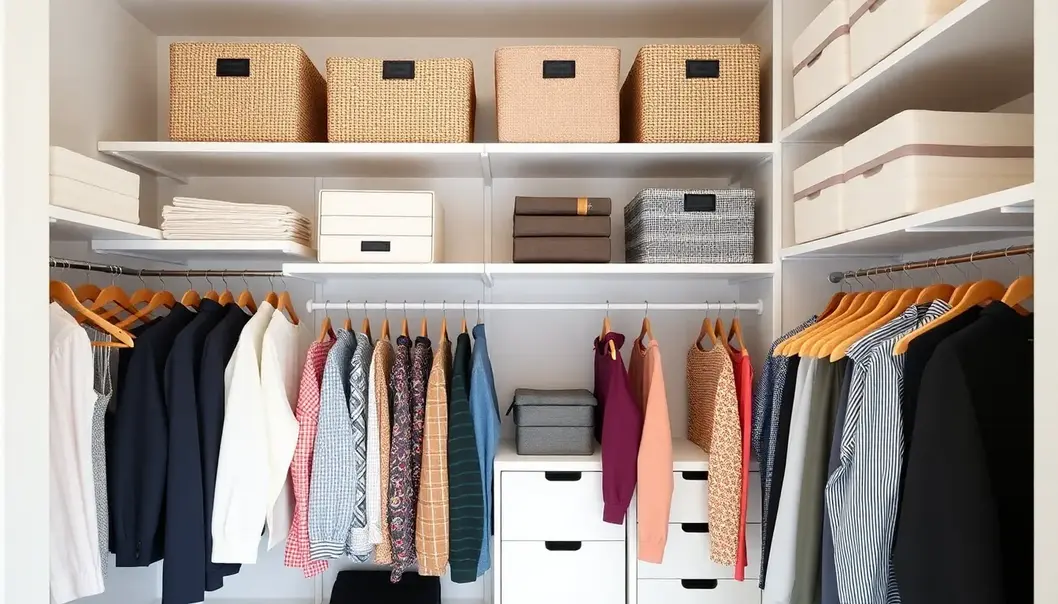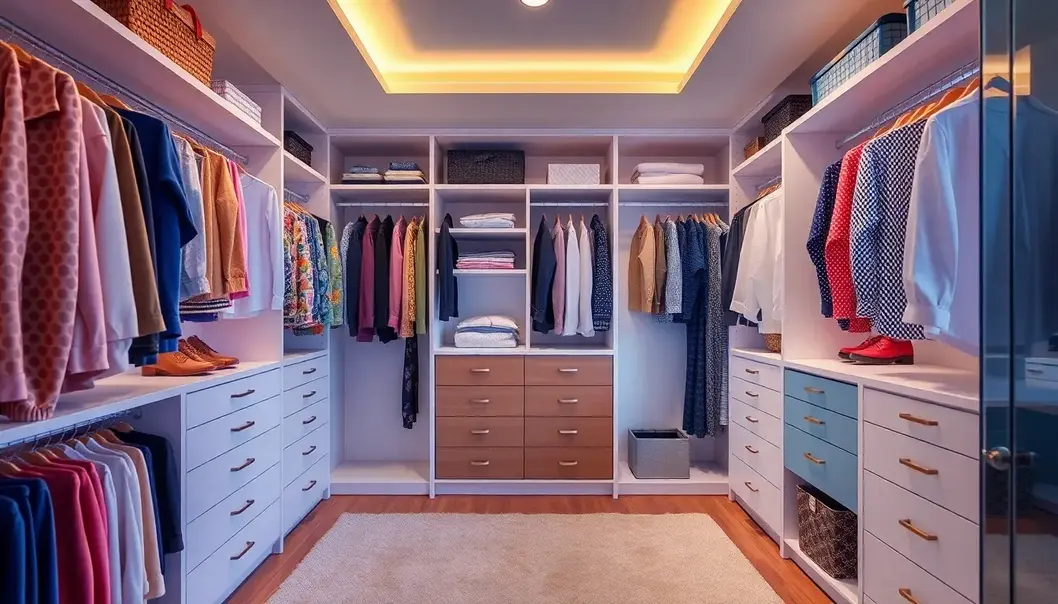Managing a shared closet can be daunting, especially for professionals balancing demanding schedules. Without order, shared spaces can quickly devolve into chaos, adding stress to already busy lives. The key to maintaining sanity lies in thoughtful organization, turning clutter into clarity. This guide provides practical solutions for creating harmony in shared closets, ensuring a seamless flow in your daily routine. By implementing strategic storage techniques and designating shared responsibilities, you can transform your closet into a tranquil and efficient environment that serves your professional and personal needs.
Creating a Functional Layout

A shared closet can easily become a chaotic collection of mismatched items, if not intentionally organized. The backbone of an orderly shared closet lies in a functional layout, which serves as the foundation to maximize space and utility. Evaluating your current setup and identifying troublesome areas are crucial initial steps to creating a space that serves everyone’s needs efficiently.
Start by carefully analyzing every aspect of your closet. Take note of the areas where clutter tends to accumulate and where accessibility becomes a hassle. These problem spots can guide you in redesigning a layout that addresses specific needs while ensuring each section of the closet is both useful and inviting.
To design an optimal layout, begin by categorizing items according to frequency of use and function. This streamlined approach facilitates shared access without sacrificing individual needs. For instance, segregate seasonal clothing from everyday items, ensuring that the most frequently used pieces are within easy reach. Moreover, segmented sections can serve as designated zones for each person’s items, maintaining individuality without infringing upon communal areas.
Leveraging vertical space is a pivotal strategy in expanding the closet’s capacity. Installing additional shelves up high or using extendable rods can dramatically increase storage without consuming valuable floor space. This approach keeps less-used items accessible yet out of the way, paving the ground for a clutter-free environment.
Another impactful method is integrating multi-functional furniture. Think along the lines of cubbies or mobile shelving units that adapt to the closet’s evolving requirements. Such versatile pieces allow you to customize the layout as needs change, whether accommodating a new wardrobe or storing various accessories.
Categorize smartly by grouping similar items together and labeling them clearly. This system ensures every closet user can quickly find what they need, boosting both efficiency and harmony. Use color-coded bins or labels to differentiate sections, striking a balance between shared and personal storage needs.
Creating a layout that enhances organization while respecting individual preferences is not just about physical rearrangement. It’s a thoughtful process that envisions how the space can best function for all involved. By employing the strategies of smart categorization, leveraging vertical height, and investing in adaptable furniture, a shared closet can transform into a streamlined, productive haven for all users.
Establishing Shared Responsibilities

A shared closet represents a collaborative endeavor that requires both effective organization and cooperative management. Setting clear responsibilities among those sharing the space is key to maintaining a harmonious environment. By dividing tasks equitably, each person can contribute to preserving order, ensuring the closet remains neat and accessible.
The first step in establishing shared responsibilities is to have an open discussion with everyone involved. This conversation should focus on identifying each individual’s preferences regarding organization and maintenance. Acknowledging different organizational styles will foster a sense of respect and understanding. Once preferences and expectations are clear, delegate tasks such as regular tidying, seasonal clothing swaps, or inspecting for damaged items.
Practical division of labor can involve assigning based on strengths. For instance, one person might excel at folding and organizing items by color, while another might be better at assembling and installing storage solutions. Implementing a rotational schedule for more mundane tasks, like vacuuming the closet floor or dusting shelves, could keep responsibilities fair and evenly distributed.
Creating rules for shared storage areas is crucial. These should cover personal boundaries and how shared spaces, such as shelves and racks, should be used. Rules might include guidelines for how clothing can be hung or folded, ensuring everyone has equal access to prime storage areas.
To maintain an organized closet, adopt a shared scheduling routine for decluttering and reorganizing. Set a recurring date, such as the first Saturday of every month, for everyone to assess their belongings. This routine assignment prevents accumulation of unnecessary items and allows space for new additions. Keeping a shared calendar visible in the home, or linked through a digital platform, will enhance accountability and ensure no tasks are overlooked.
Setting up these systems not only streamlines closet organization but also builds a sustainable system that accommodates future changes, such as moving in new housemates or a change in available space. Establishing shared responsibilities in a closet not only prevents mess but promotes a collaborative and respectful living environment.
Final words
By establishing a functional layout and clear responsibilities, shared closet spaces can become a model of efficiency and order. This approach not only reduces stress but enhances productivity, ensuring that each day begins and ends in harmony. With a bit of planning and cooperation, a shared closet can equal shared success.
Ready to transform your shared closet into a haven of efficiency? Contact us today to discover tailored solutions for your organizational needs.
Learn more: https://www.closetorganizationpros.com/contact
About us
Closet Organization Pros specializes in creating personalized storage solutions that bring order and tranquility to your space. Our expert team works with you to design and implement systems that not only meet your organizational needs but also enhance your daily routines. Whether it’s a shared closet or any other storage area, we can provide the perfect blend of functionality and style.



